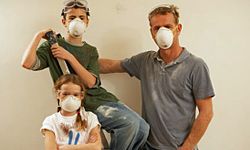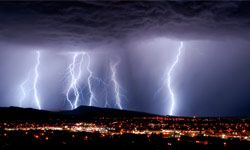Unlike in the cartoon universe, anvils don't fall from overhead in the real world. We don't expect them. Or bricks, or bullets, or anything but rain and snow. We don't know anyone who has been injured by an anvil falling on them. We have no prior history with the Acme product line. So most of us would likely consider being struck on the head by an anvil a freak accident. An act of God. Bad luck.
Freak accidents and acts of God are generally considered to be unlikely events that we could not have predicted, controlled or prevented. For example, what are your odds of being struck by a falling bullet that was fired straight up into the air? Let's break it down.
Advertisement
What goes up must come down, right? What goes up: A bullet fired from a Kalashnikov rifle leaves the muzzle traveling faster than 1,500 miles (2414 kilometers) per hour. What comes down: If that bullet is shot straight into the air it would be traveling at about 150 miles per hour (241.4 kilometers per hour) as it falls to the ground -- you can thank air resistance for slowing it down -- and would hit the ground, or your head, with the same amount of energy as if you were struck by a brick (or an anvil) falling from about 4 feet (1.2 meters) above you [source: Matthews]. Bullets falling at 68 mph (109.4 kilometers per hour) easily penetrate the skin, and those that are traveling at least 136 mph (218.9 kilometers per hour) may penetrate bones, as well as cause internal injuries or death [source: Maugh]. The likelihood you'll suffer an accidental injury from a firearm discharge in your lifetime? Just shy of 1 out of 6,000 [source: National Center for Health Statistics].
Dodging bullets shouldn't be your only concern, though. Circumstances such as being struck by lightning (your odds are about 1 in 10,000 in a lifetime), being struck by a meteorite (those lifetime odds are about 1 in 700,000) and being injured by a vending machine (you may be surprised, but vending machines get about two or three of us every year) are also examples of freak accidents, as are events such as Hurricane Katrina and other natural disasters [sources: NOAA, Plait]. Do you know your odds of being injured or killed at an amusement park? We do, and we'll roll out the numbers next, along with how the pros calculate those odds.
Advertisement


